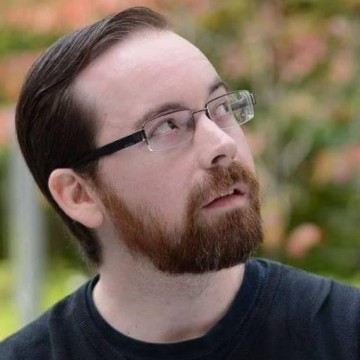Creeptober Night 17: The Strangers: Prey at Night (2018)
Reassessing a maligned sequel, and diving deep into the original script.
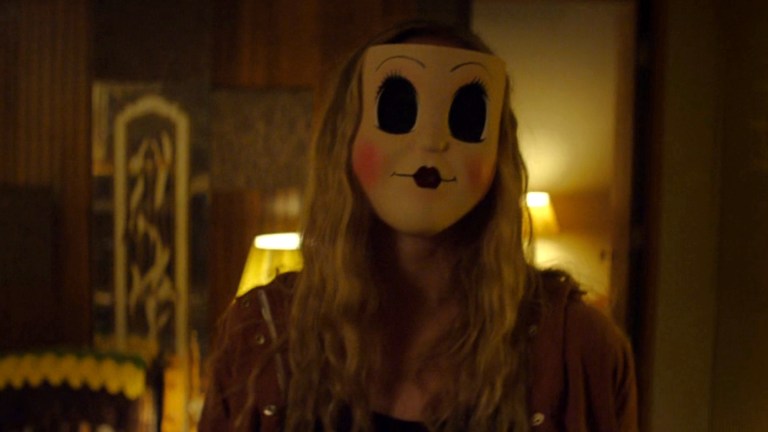
Table of Contents
Tonight’s Creeptober pick begins a double-header of sequels which will continue tomorrow. First up is The Strangers: Prey at Night, a movie that had a lot to live up to as a follow-up to one of the best horror movies of the 2000s, and one that I judged rather harshly upon its initial release.
Reacting to The Strangers: Prey at Night
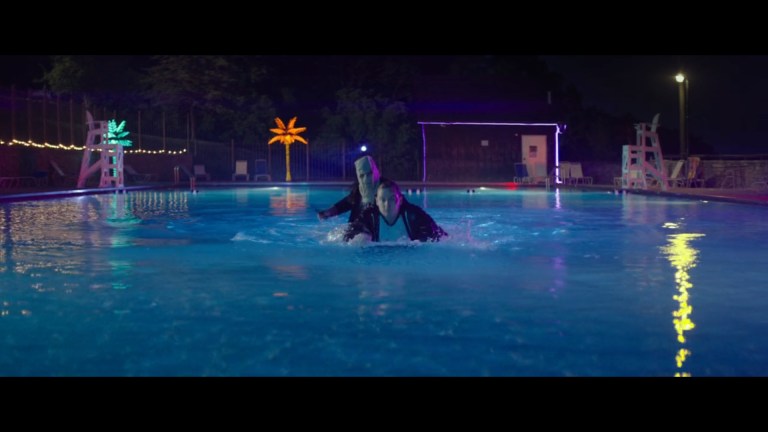
To be completely upfront, I’m not the biggest fan of The Strangers: Prey at Night. I saw it when it was first released, I was disappointed by it, and I haven’t watched it since. I remember thinking that the scene at the swimming pool was good, but the rest was a letdown. It might seem strange that I’d add it to the Creeptober marathon, but I did it because I wanted to give the movie another shot. I’ve seen people say good things about it over the past few years, and I wanted to see if I was being too harsh. Plus, I probably wouldn’t have watched it again if I didn’t force myself to.
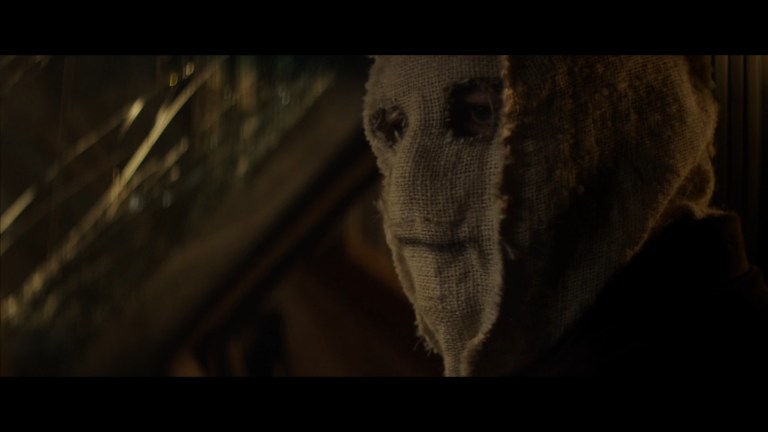
So, I’ve now watched The Strangers: Prey at Night twice. I still don’t think it’s a good followup to The Strangers. The incredible tension that The Strangers (2008) builds isn’t present in this sequel. Prey at Night is more of a straightforward slasher, while The Strangers is a suspense-filled home invasion movie. The tonal change just doesn’t feel right. But enough time has passed that I can watch Prey at Night without directly comparing it to its predecessor. If I ignore the connections to The Strangers and simply watch Prey at Night as a standalone slasher film, I think it’s pretty good.
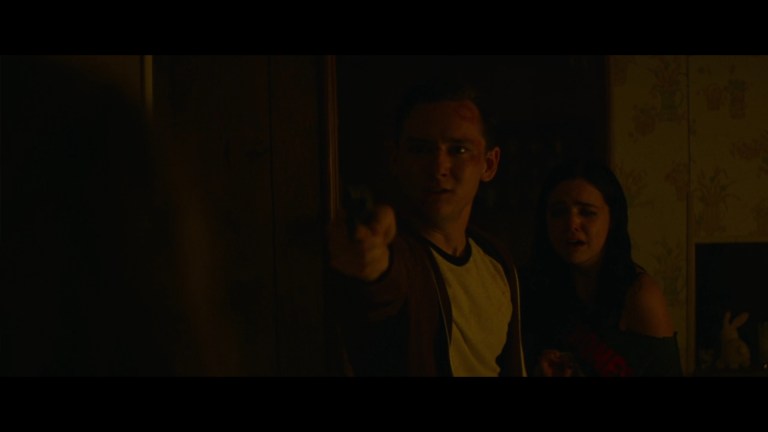
Just to get it out of the way, as a slasher movie, Prey at Night falls prey to some obvious plot contrivances. Like, two phone-obsessed teenagers somehow both leave their phones behind when going for a walk (I understand that they were asked to put their phones down, but why didn’t they just put them in their pockets?). The mother, Cindy, doesn’t try to fight back at all when she’s getting stabbed, despite the fact that her daughter is already out of the trailer. The “you hide here while I go and probably die” thing with Luke and Kinsey. I get the reasoning from the character’s perspective, but clichéd decisions like this and others throughout the movie get a bit of an eye roll from me. These are just a few examples, but as I’ve said before, clichés and questionable plotting don’t necessarily bother me if the movie is entertaining.
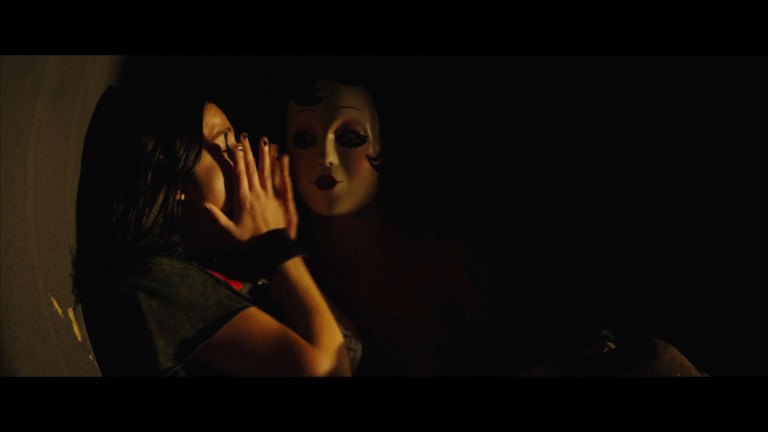
Prey at Night does do many of things well though. I like how the three strangers feel like they have distinct personalities. Dollface is very focused on murder pretty much all the time (other than when she’s doing the “is Tamara home” shtick). Pin-Up Girl seems more interested in providing scares and creepiness. And the Man in the Mask likes automobiles and exudes a powerful presence. I like the trio of killers in this movie.
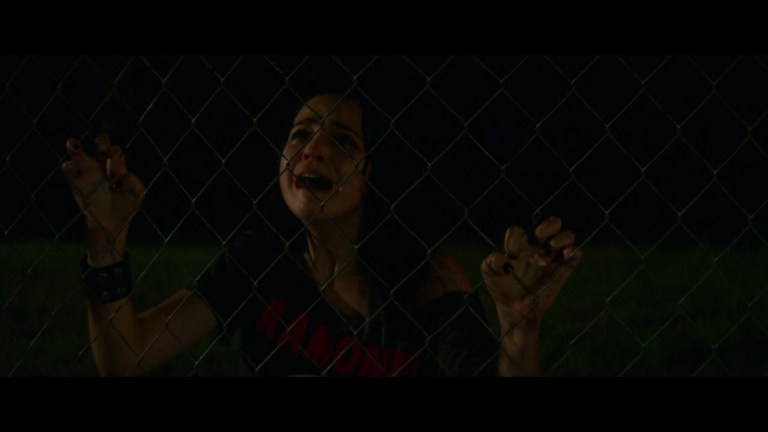
Also, I think director Johannes Roberts creates a suitably dark atmosphere throughout the movie. The wide-open expanses of the trailer park contrast with the tight spaces of the 2008 movie in interesting ways. Since this movie is more about chases, the open spaces feel like they give false hope to the characters. They could run anywhere, but nowhere they run to is safe. The location is used very well.
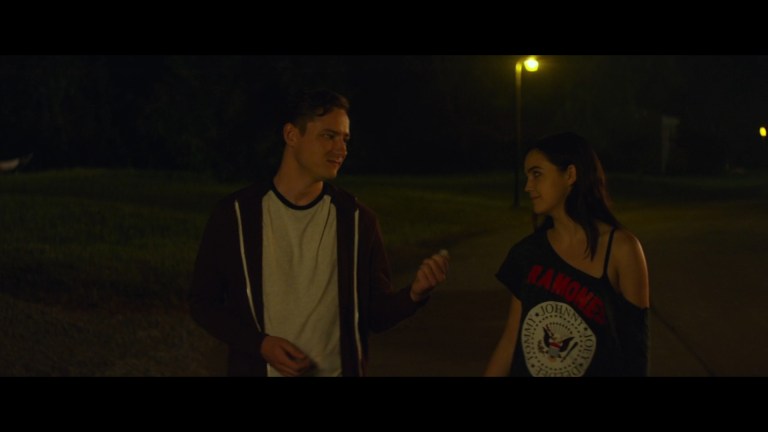
To top it off, despite not really liking either of the teens at the beginning of the movie, I find myself pulling for their survival by the end. Both actors, Bailee Madison and Lewis Pullman, do well to make their characters sympathetic. I think if more background had been given in the beginning, then the effect would’ve been even stronger. I mean, a stereotypical troubled teen who feels like she’s a victim of her parents isn’t totally original or interesting on paper, and a little context for what she’s been through before the movie begins would go a long way. But it’s difficult to not have a feeling of triumph when Luke dispatches the Pin-Up Girl, and when Kinsey uses the shotgun on Dollface. I probably wouldn’t have had the strangers killed in the movie, but since they are killed, these scenes work in an effective way.
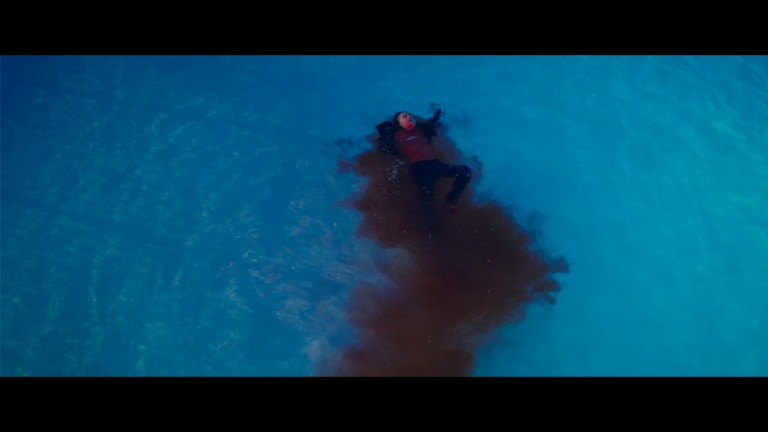
Of course, the pool scene is still the best in the entire film. The music, the lights, the slow drift of Luke’s body as a blood trail expands behind him. It’s all very well done, and it makes the entire movie worth watching. My reassessment of The Strangers: Prey at Night hasn’t changed my mind about the movie much, but it did reaffirm that the swimming pool scene is quite effective. And to be fair, during this latest viewing I did find many smaller things that I was able to enjoy more than I did the first time.
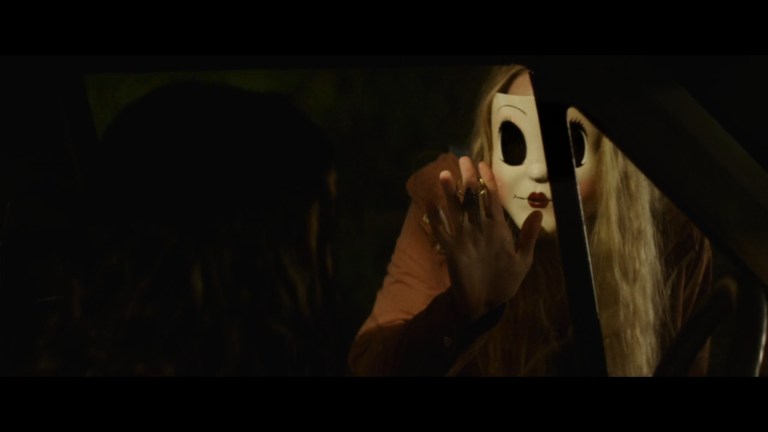
I’ll still never watch Prey at Night back to back with the original movie, because they’re not good as companion pieces. Instead, I think Prey at Night fits well with the newer movies in the franchise that have come out over the past couple of years. They all feel like movies made by people who might enjoy the original, but don’t quite get why the original works so well. And that’s okay. I think The Strangers (2008) is excellent, but pretty-good movies can be entertaining too. Prey at Night is pretty good.
The Strangers: Prey at Night Original Script
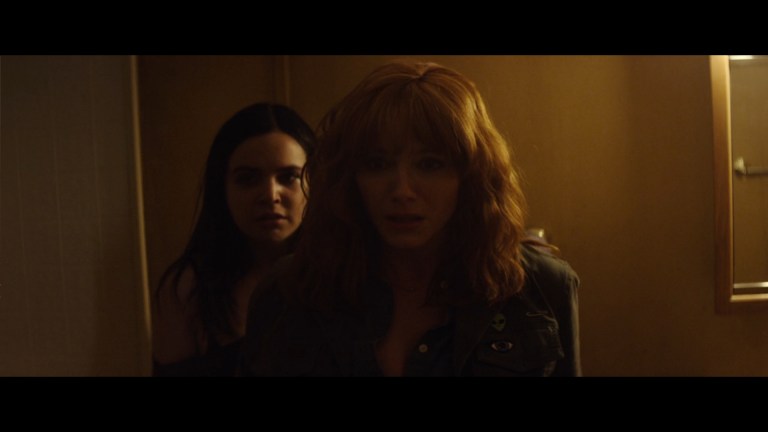
When I was looking into facts about the making of The Strangers: Prey at Night, I started reading about how the script was written. I knew that Bryan Bertino, the writer and director of the 2008 film, is given a writing credit along with Ben Katai for Prey at Night. I saw that Bertino’s original script for the sequel had been rewritten, so I found the script and read it. Today’s trivia lists a few of the differences between the finished Prey at Night that we got, and the story Bryan Bertino first wrote before changes were made.
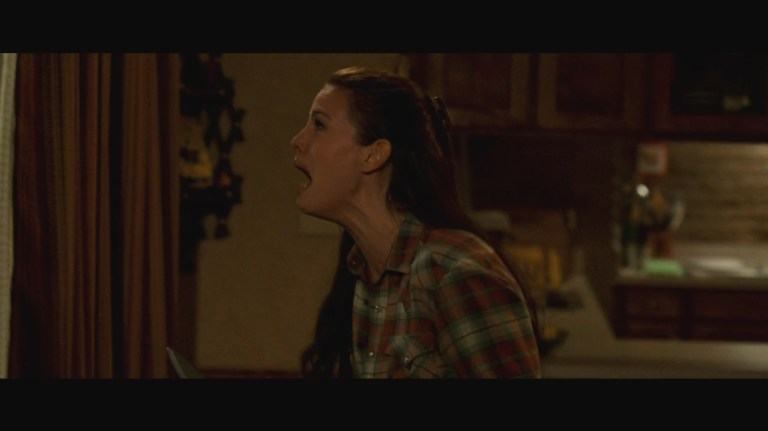
Bertino’s script starts with a scene that involves Liv Tyler’s character from the original film, Kristen. Kristen is in her father and stepmother’s home, recovering from the injuries she suffered at the hands of the strangers. She’s in bed, still in pain after having recently been released from a hospital (there’s a “Welcome Home” sign still hanging up). From the bedroom she hears a loud knock on the door. Then she hears her stepmother scream. Then her father screams. Then nothing. The phone rings so she picks it up to hear, “Is Tamara home?” As Kristen struggles to escape, she is killed by the Man in the Mask. The scene with Kristen, obviously, is not in the movie which instead begins with Uncle Marvin and his wife being killed in the trailer park.
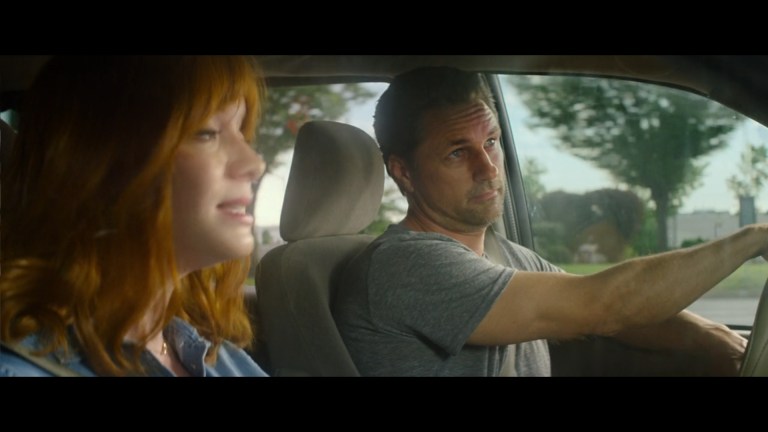
The family in Bertino’s original script is very different. They’re still a family of four, and they all use the same character names, but they have a more complex dynamic. For one thing, Kinsey is 10 years old in the script, and she’s not being sent away to a boarding school. Instead, the family has been evicted from their home because the father, Mike, lost his job at a factory. They leave to go stay with the kids’ grandparents, but they’re late start means they have to find somewhere else to stay for the night. In this scenario Luke, who is 17 years old, is the angry kid, not Kinsey. Luke doesn’t want to leave the only home he’s known, and he blames his father. Luke and Mike have an openly antagonistic relationship with each other. Kinsey is sad, but she has a surprisingly good outlook on the family’s current hardship.
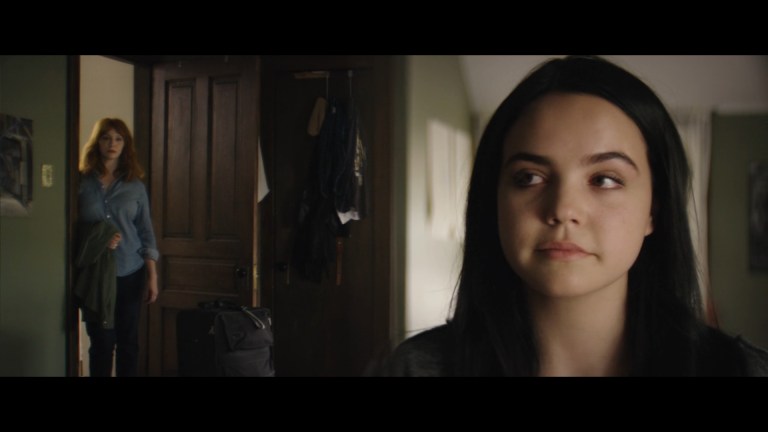
There’s a strong theme of loss and insecurity in this version of the family’s story. As I understand it, Bertino wrote the script in 2009, so I’m sure the economic recession of that time period played a direct role in the family’s background. Since the movie didn’t actually get made until many years later, I suppose the producers wanted to change that part of the script because the recession wouldn’t be as relevant. In my opinion though, changing it to just being about a teenager acting out and being mad at her parents loses a lot of narrative strength.
In the movie we got, there’s some anger and blame within the family which is all based on actions that they chose to do themselves (acting out, sending Kinsey to boarding school, etc.). In Bertino’s idea, there is nobody to blame. Everyone is sad and angry, but their feelings originate from any issue that none of them had control over. This fits much better with the theme of the strangers representing something bad that can happen to people just because they were in the wrong place at the wrong time. But anyway, back to the script.
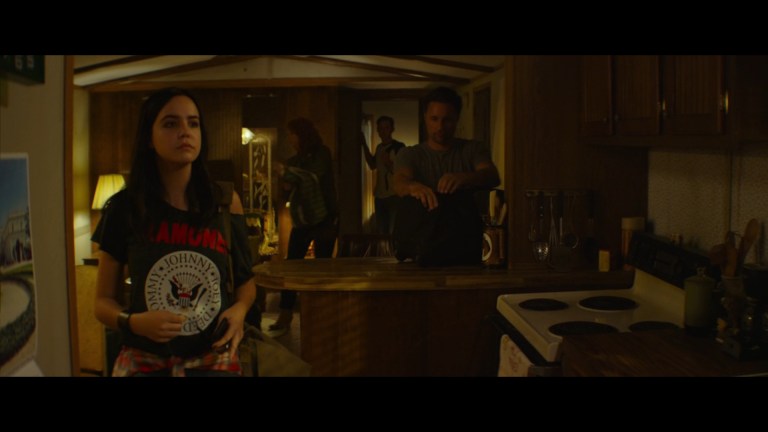
In the script, the trailer park is empty not because “everybody leaves after Labor Day,” but because everyone is losing their jobs and can’t afford to keep their homes. The family stays in the abandoned trailer of Mike’s friend Frank. There’s no power in the trailer they’re staying in.
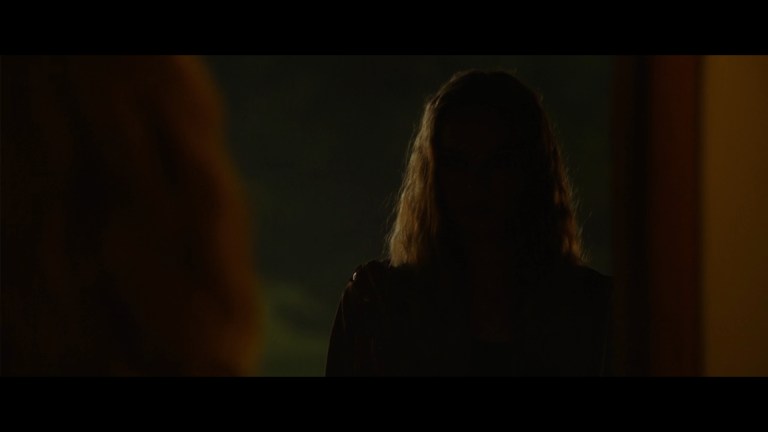
Mike and Luke get into an argument, and Mike tells his son to go take a walk to cool off. He does, and Kinsey follows him. As the siblings walk around, they break into empty trailers, eventually finding one with two dead bodies tied to chairs (which echoes the ending of The Strangers, suggesting they’ve repeated the process we’ve seen before). While they’re inside, they hear a truck and hide. The Man in the Mask and Pin-Up Girl enter the trailer, but they don’t seem to notice the kids. After the strangers leave, Luke and Kinsey run away, but Dollface watches them. The big difference here is that in the movie, Dollface starts messing with the family before the kids find the bodies which makes it seem like they knew the family was there from the start. In Bertino’s script, it seems like the strangers aren’t aware of the family until the kids started exploring.
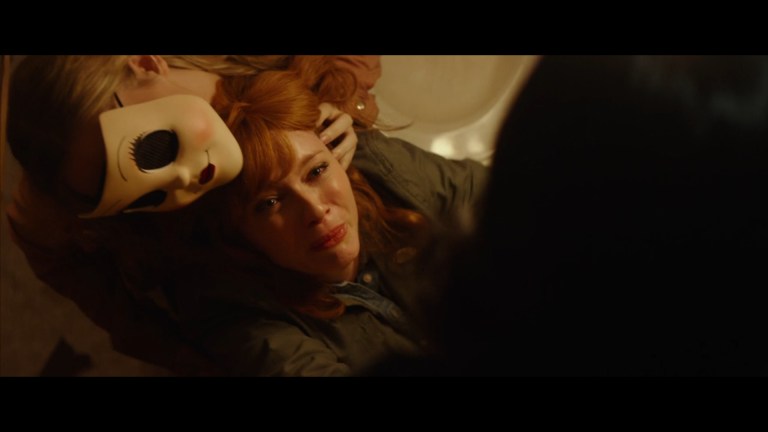
The script version of Cindy does try to fight back against Dollface. The basic setup is similar, with Cindy and Kinsey being backed into the trailer’s bathroom. In the script though, Dollface has an ax to break down the door. Cindy helps her 10-year-old daughter escape through a small window, and then she makes an attempt to fight. Cindy is still killed in this scene, but her actions make more sense. She’s also able to call the police and tell them to come to the trailer park. Outside, Kinsey runs because the other two strangers are there waiting for her.
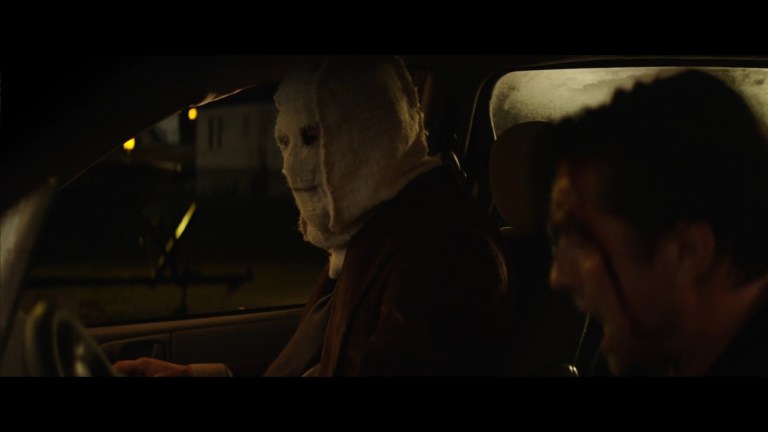
Mike is stabbed in the chest by Pin-Up Girl in the script. This is before he and Luke get into the truck. Mike is dying as Luke is forced to drive. Luke eventually crashes when an ax is thrown and nearly hits him. When Luke looks over, his father is dead, having bled out from the stab wound.
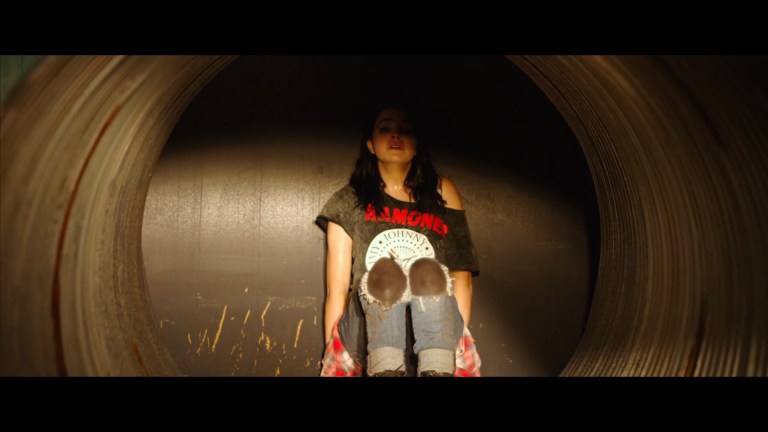
Meanwhile, Kinsey is stalked while hiding in a concrete tube. Kinsey sees a police car, but she’s too scared to call out or run because she can hear footsteps around her, and she can see someone watching her from the darkness. This is similar to what we see in the movie, but the script calls for slow dread rather than a sudden jump scare. Kinsey is tormented for an extended period here. After she gets out of the tube, she’s tricked by Pin-Up Girl who hides and puts on the voice of a little girl, pretending to be another victim of the strangers.
The script also has Luke finding Kinsey after the truck smashes into the trailer. The noise is what brings Luke to his sister.
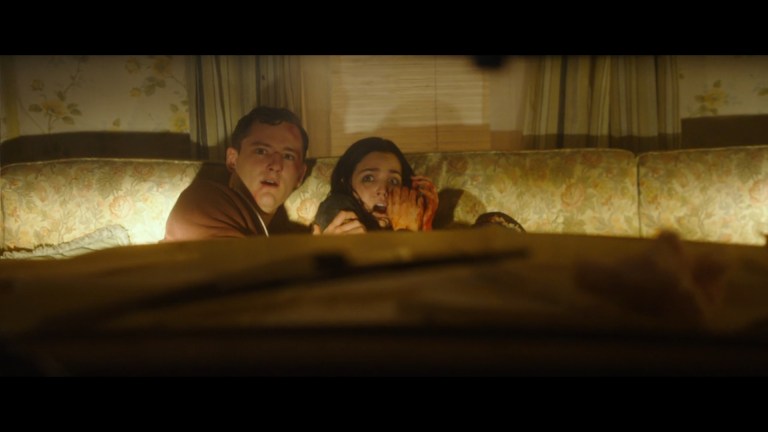
One huge difference from the movie is that Bertino’s script shows Luke and Kinsey finding a trailer occupied by a bunch of teenagers having a party. They ask for help, but the teens are too slow to understand what’s happening. The Man in the Mask is suddenly in the room, and he starts swinging his ax, murdering people at a rapid pace. Pin-Up Girl gets another teen as everyone tries to flee. The remaining teens pile into a van and leave, explicitly refusing to let Luke or Kinsey get into the van with them. Unluckily for the teens, Dollface sneaks into the van and starts slicing everyone up.
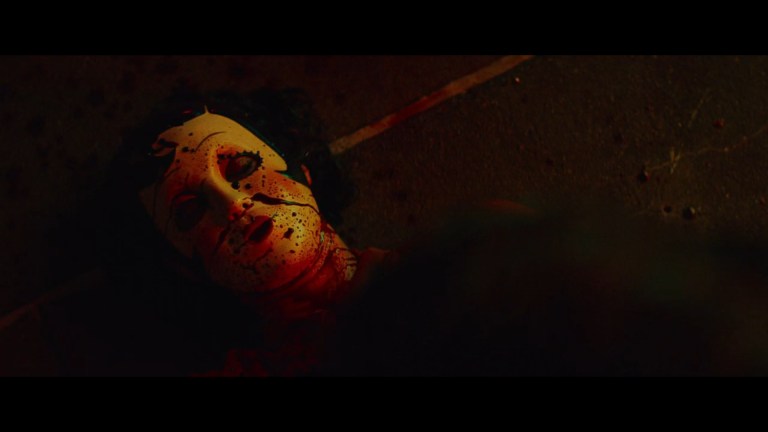
There is no pool scene in Bertino’s script. Instead, Luke tells Kinsey to run away as he goes back to the trailer where the party was happening to try to draw the strangers to him. He’s going to attempt a noble sacrifice, a trope I’m not always a huge fan of. Luke manages to kill Pin-Up Girl in a way similar to how we see him do it in the movie, but her death is more disturbing as she chokes on her own blood and is smiling when her mask is removed.
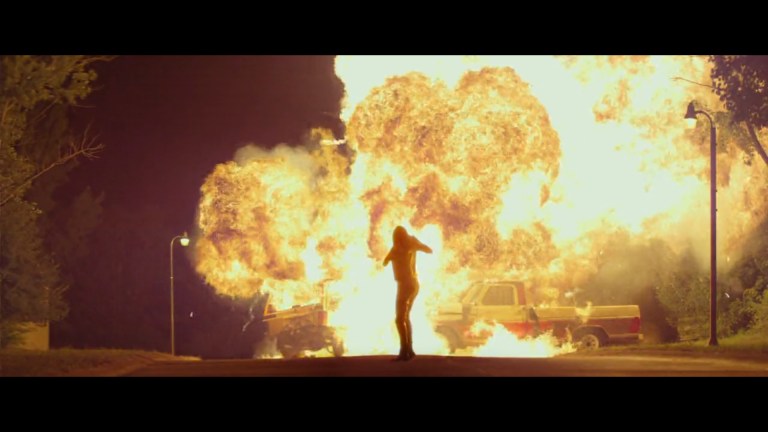
Luke’s fight with the Man in the Mask, however, ends differently. The Man overwhelms Luke, stabbing him in the chest and finishing him off with his ax. In the script, Luke dies as Kinsey watches from her hiding spot. As she continues to hide, the remaining strangers bang against the walls of where Kinsey is cowering. They tell her that they know she is there, and then they stop. It’s complete silence as the script cuts to black.
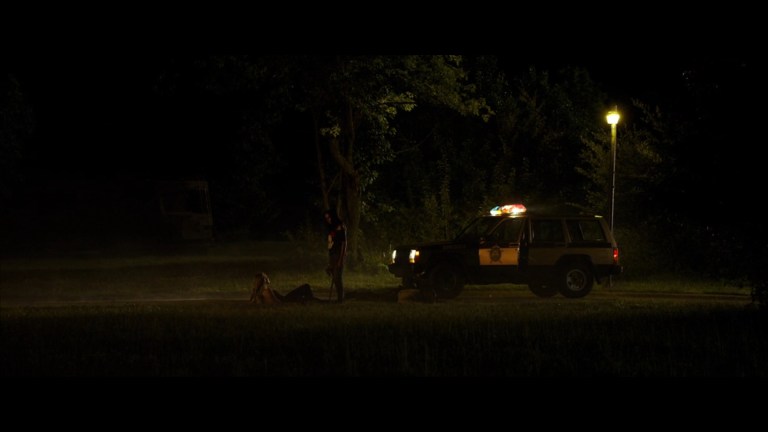
In the next scene, it is dawn. Kinsey is still in her hiding spot, alive. As she walks out into the emerging morning light, she finds a police car. There’s blood inside, and the officer lies dead nearby. Kinsey reaches for the police car’s radio, but that’s when Dollface grabs her. However, Dollface is severely injured, and Kinsey is able to get away.
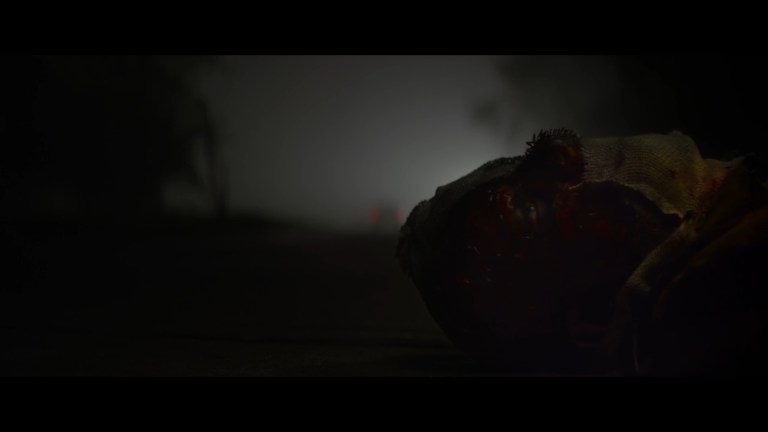
As Kinsey tries to leave, the Man in the Mask starts speeding toward her in his truck. Kinsey manages to dive into a ditch, and the truck is smashed by an 18-wheeler. Similar to the movie, Kinsey gets into the bed of a passing pickup truck as the Man tries once last time to get her. Kinsey takes his ax and cuts his hand apart, sending the Man in the Mask to the ground. Kinsey is carried away in the truck as the Man, still alive, rips off his mask. The End.
I don’t think the script Bryan Bertino wrote is perfect, but I do think it’s closer in tone to the 2008 film than Prey at Night ended up being. The movie is more straightforward with its chases and kills, while the strangers in the original script do a lot more stalking and messing with the family in psychological ways. Bertino’s script feels much scarier than Prey at Night.
